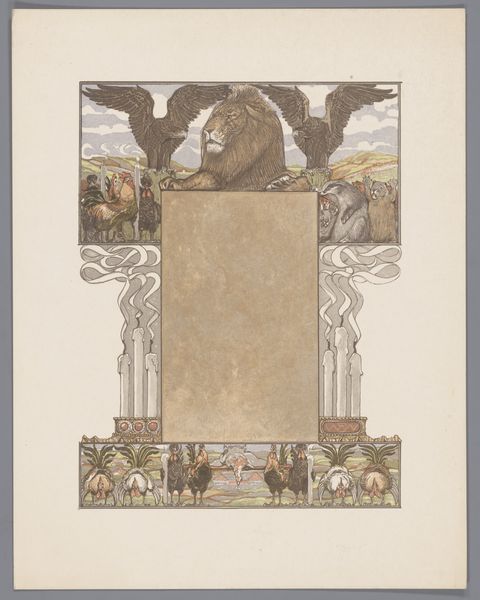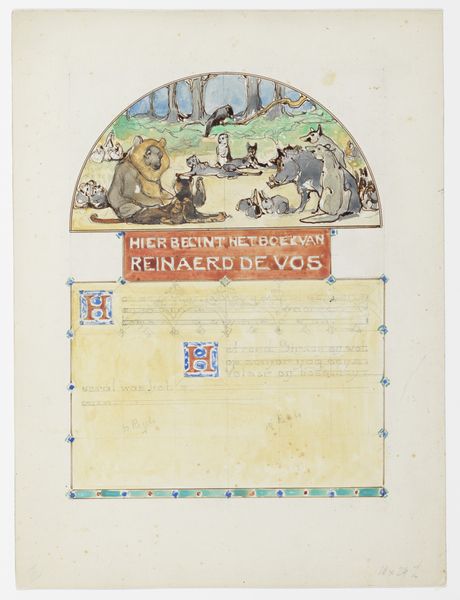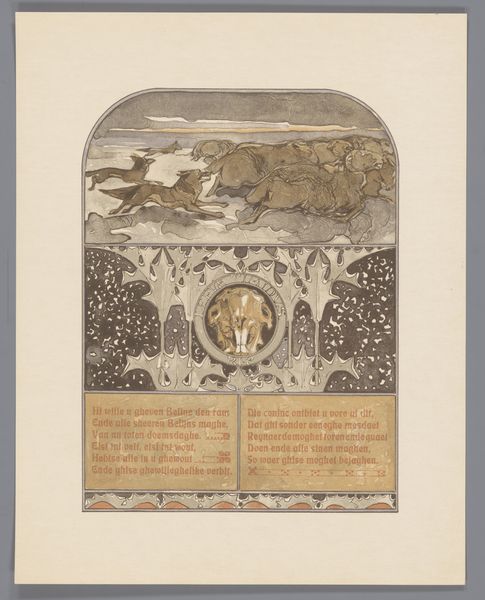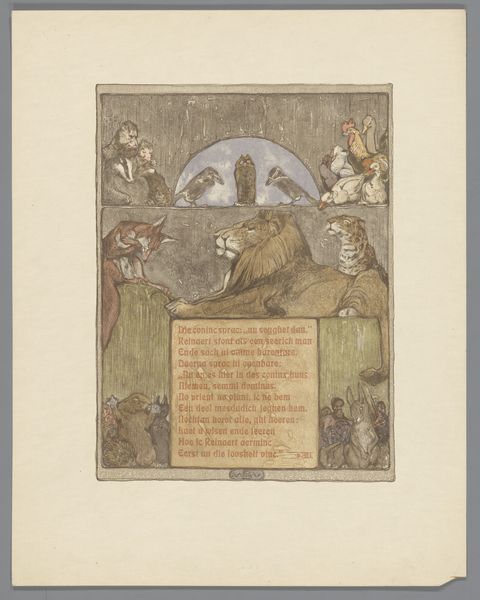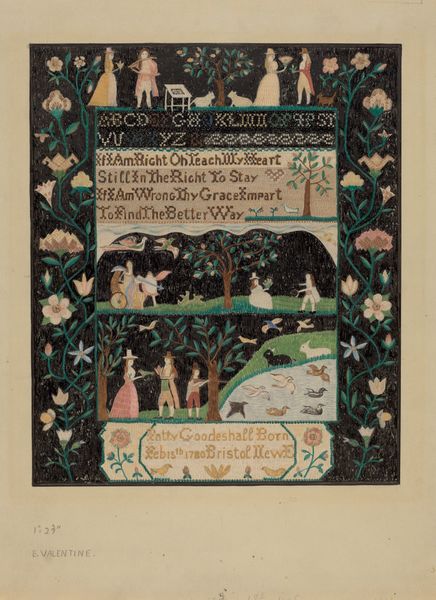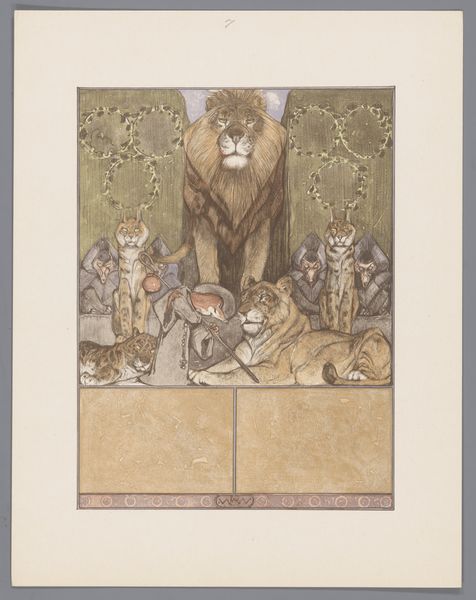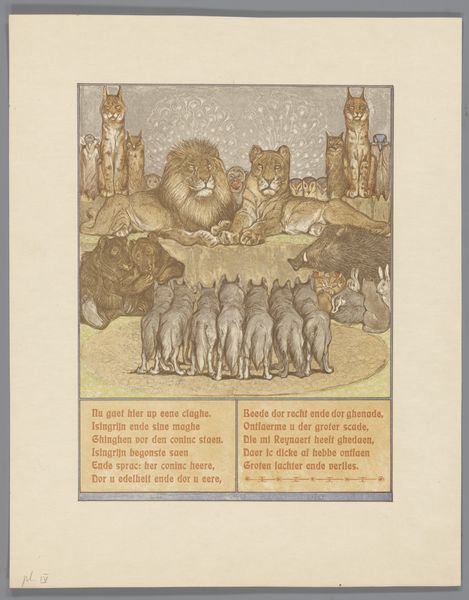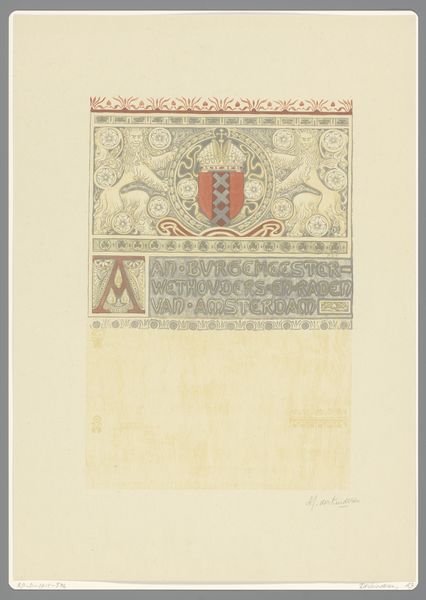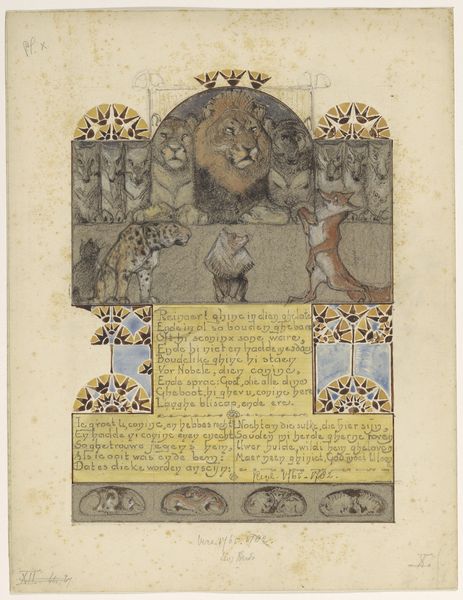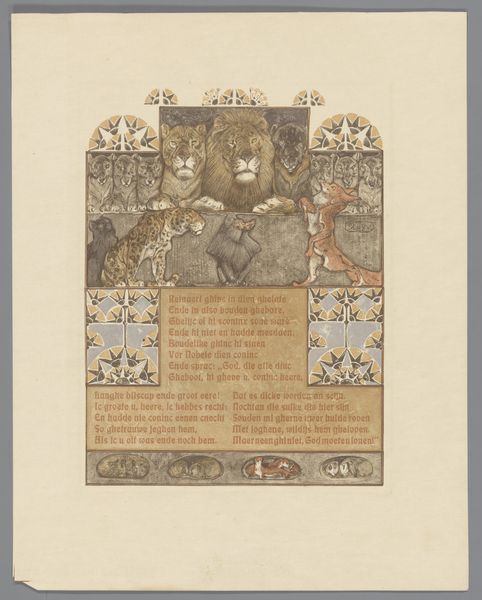
#
landscape
#
folk-art
Dimensions: height 381 mm, width 270 mm
Copyright: Rijks Museum: Open Domain
Editor: This piece is called "Group of animals from Reinaert de Vos", created around 1910 by Bernard Willem Wierink. It reminds me of illustrations from a storybook. What catches my eye is this blend of realism with a stylized setting, a bit theatrical, wouldn't you say? How do you interpret this work within its cultural context? Curator: That's a keen observation! It's definitely tied to the late 19th, early 20th century Arts and Crafts movement, when there was great interest in returning to folk tales, handcrafting, and simpler aesthetics. "Reinaert de Vos," or Reynard the Fox, is a classic trickster tale, deeply rooted in European folklore. This illustration would've been part of a broader revival of interest in national identity and cultural heritage. What I find interesting is the tension between this idealized, almost medieval aesthetic and the encroaching modernity of the time. Do you notice any stylistic choices which would exemplify such tensions? Editor: I think I see what you mean! The composition looks like it references illuminated manuscripts, but then there's this flattened perspective, and an emphasis on line that feels very modern, perhaps reflecting evolving trends in illustration and book design? It almost seems to be referencing an idealized version of the past in a very self-conscious manner. Curator: Precisely. The visual language signals an awareness of historical artistic conventions, but simultaneously adapts those conventions to modern sensibilities. It suggests a negotiation between cultural tradition and artistic innovation. This approach highlights the social role art can play by reinforcing shared cultural narratives, or refashioning national identity. How do you think audiences might have interpreted such a work at the time? Editor: I imagine it would resonate with a longing for simpler times, offering an escape from rapid industrialization. This conversation has definitely deepened my understanding, seeing it not just as an illustration, but as a cultural object with complex layers of meaning. Thanks for the insightful analysis! Curator: It's a pleasure to look closely at art through the intersection of visual aesthetics, historical context, and public sentiment. I am left considering how even seemingly simple artworks often contain hidden meanings regarding broader societal values.
Comments
No comments
Be the first to comment and join the conversation on the ultimate creative platform.
